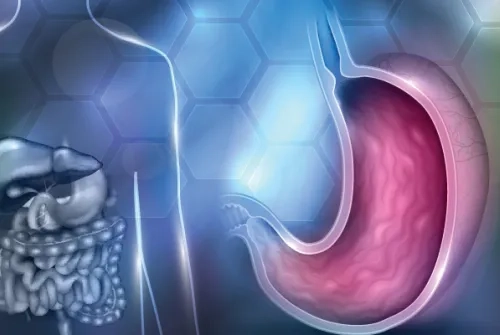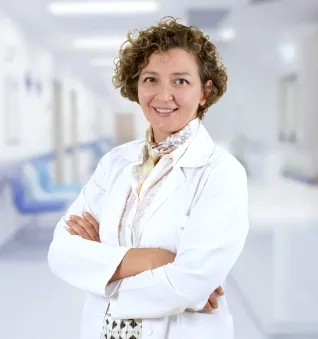Alo Yeditepe
Alo Yeditepe
Stretta / Endoscopic Reflux Treatment
What is Gastroesophageal Reflux?
Gastroesophageal Reflux Disease (GERD) is often caused by gastric acid infrequently escaping to the esophagus by other secretions such as pepsin and bile acid. The main reason for this escape is that the valve-like structure called the esophageal lower sphincter, which consists of dense muscles between the esophagus and the stomach, is constantly open.
It usually causes burning behind the breastbone, sometimes in the back and stomach, and is manifested by symptoms such as sour mouth, bitter/sour water, and food coming into the mouth. Prolonged throat infections, hoarseness, chronic fringe, asthma attacks at night, and excessive snoring are also among the causes.
How is Reflux Treated?
The treatment method is decided according to the stage of the disease. It starts with medication first. However, in some people, complaints can continue despite drug treatment. In this case, two different methods are used: Surgical Intervention (Fundoplication treatment) and Radiofrequency Ablation (Stretta) to eliminate gastric valve laxity.
Radiofrequency Ablation (Stretta)
Decreased expansion of the stomach valve as a result of contact with high-grade current (RF) from certain points is the basis of the process. Radiofrequency current, which is used in the radiofrequency ablation method by endoscopy, has been used for the treatment of various diseases such as heart rhythm disorders and liver cysts for years. The method, in which patient selection is very important, can be applied in young people and people with an opening in the stomach valve below 3 cm.
It is possible to return home on the same day after the procedure in which reflux can be treated in 30 minutes without the need for surgical intervention.
Who is the Suitable Radiofrequency Ablation Method?
- Those over 18 years of age,
- Those who have had GERD complaints for more than 6 months,
- Those with a stomach opening of 2 cm or less,
- Those without Barret Esophagitis
Who is the Radiofrequency Ablation Method Not Suitable for?
Endoscopic reflux treatment has some limitations and cannot be applied to the following individuals.
- Persons less than 18 years of age,
- Pregnant women,
- Gastric hernia over 2 cm
- Patients with severe esophageal damage (Stages 3-4),
- Patients who have damage to the esophagus up to cellular change (Barrett's esophagus),
- Patients with achalasia
What is the Success Rate of the Treatment?
SAGES (Society of American Gastrointestinal and Endoscopic Surgeons) and FDA (U.S. Food and Drug Administration) recommend the use of the procedure in the treatment of GERD based on strong evidence.
This content was prepared by Yeditepe University Hospitals Medical Editorial Board.
”
See Also
- What is a Liver Transplant, How is it Done? and Who is it For?
- What is Constipation? What Helps With Constipation?
- What is Hepatitis B? What are its symptoms? How is it Transmitted?
- How to Cleanse the Liver the Fastest?
- Who Gets Colon Cancer?
- What is Colostrum? What are the Benefits of Colostrum Milk?
- Stomach Cancer Causes, Symptoms and Treatment
- What is Colon (Intestinal) Cancer? Symptoms and Treatment
- What Causes Nausea? What is Good for Nausea?
- What is Heartburn? What is Good for Heartburn?
- What is Fatty Liver?
- What is Good for Diarrhea? How to Treat Diarrhea?
- What is a Probiotic? What Are Its Benefits?
- What Is Reflux?
- Non-Surgical Treatment of Reflux
- What are the Nutrients That Stress Digestion?
- What are Capsule Treatment Methods in Stomach, Small, and Large Intestine Screening?
- Gastroenterology Procedures
- Pay Attention When Consuming These Nutrients!
- Mediterranean Diet Prevents Developing Colon Cancer!
- Breakthrough Innovations in Colon Cancer
- Diarrhea and Constipation Increased in Those with Irritable Stomach
- I Was Waking Up With Stomach Pain, I Fell Better After Endoscopic Fundoplication
- Anemia, Constipation, and Vomiting of Unknown Cause Can Be Dangerous
- As the Western Diet Increases, So Does Stomach Cancer
- Ramadan Warning for Those Who Experience Stomach Disorders
- Causes and Treatment of Abdominal Bloating
- Hepatitis Disease Poses Risk for Esophageal Varices
- The Giant Stones In The Biliary Tract Of 71-Year-Old Patient Were Removed Without Surgery
- How Is Stomach Infection Transmitted?
- What is Gastroesophageal Reflux Disease?
- Capsule Endoscopy
- Fundoplication Method / Endoscopic Reflux Treatment
- Throat Reflux
- Techniques and Applications Used in Gastroenterology
- Irritable Bowel Syndrome (IBS)
- How to Swallow the Drug?
- Non-Surgical Reflux Treatment
Alo Yeditepe




